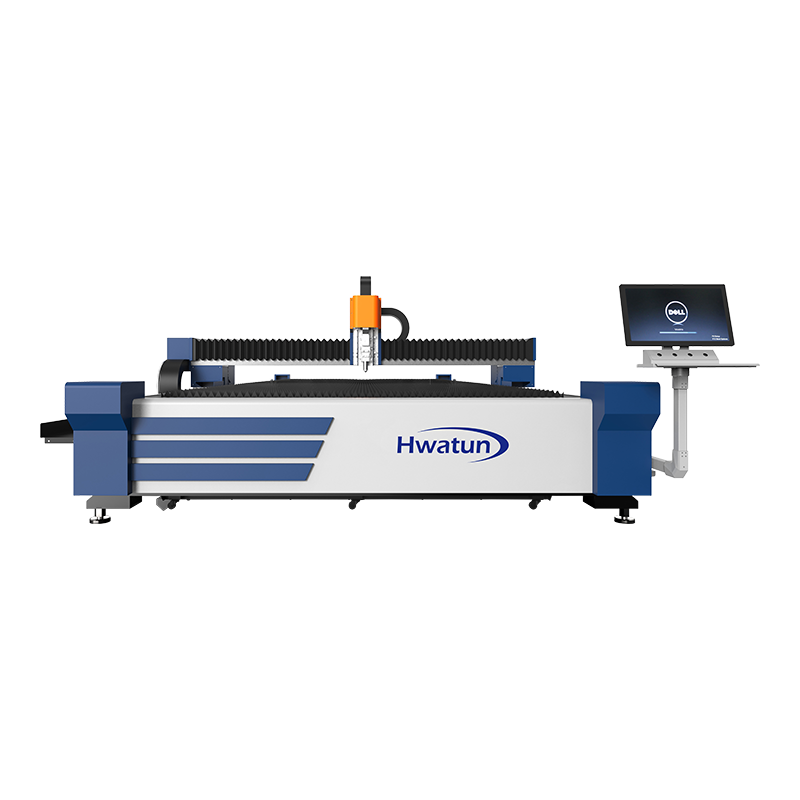Web Menu
Product Search
Exit Menu
What are the functions of gas assist in the cutting process of CNC LASER CUTTING MACHINE?
In CNC laser cutting machines, the use of assist gases is integral to achieving precise, efficient, and high-quality cuts. Different types of gases are used depending on the material being processed and the desired outcome. Below are the key functions of gas assist in the laser cutting process:
Enhancing Cutting Efficiency
Assist gases improve cutting speed and efficiency by optimizing the interaction between the laser beam and the material. For instance:
Oxygen: Reacts exothermically with metals like mild steel, generating additional heat that accelerates the cutting process.
Nitrogen: Acts as an inert gas to prevent oxidation, maintaining a stable cutting environment for materials like stainless steel.
Improving Cut Quality
Assist gases play a crucial role in achieving clean, smooth edges and reducing imperfections:
Material Ejection: The high-pressure gas clears molten material and debris (dross) from the kerf, preventing re-solidification along the edges.
Edge Finish: Nitrogen, as an inert gas, helps produce oxidation-free edges, which is especially critical for applications requiring high aesthetic or functional quality.
Cooling the Material and Preventing Heat Damage
The gas flow helps manage heat distribution during cutting, reducing the risk of:

Thermal Deformation: By dissipating heat, the assist gas minimizes warping or distortion of the material.
Edge Burning: Oxygen or other gases can be regulated to avoid excessive burning or heat marks, preserving the material’s integrity.
Protecting Optical Components
The gas stream prevents smoke, vapor, and spatter generated during the cutting process from reaching sensitive optical components such as lenses or mirrors. This reduces the likelihood of contamination and prolongs the lifespan of these components.
Enabling Piercing and Material Penetration
During the initial piercing phase, assist gases aid in removing molten material quickly, ensuring the laser beam penetrates cleanly and efficiently. This is particularly beneficial when cutting thicker materials.
Enhancing Precision in Fine Details
For intricate designs and fine cuts, assist gases ensure that molten material does not obscure or interfere with the laser beam’s precision, resulting in sharp and accurate detailing.
Customizing for Material-Specific Needs
Different gases serve specific purposes depending on the material:
Oxygen: Commonly used for cutting mild steel due to its ability to react with the material and enhance cutting speeds.
Nitrogen: Preferred for stainless steel, aluminum, and non-ferrous metals to prevent oxidation and produce burr-free, clean edges.
Air: A cost-effective alternative for general applications, suitable for cutting thin sheets where high-quality edge finish is not critical.
Supporting Safety and Environmental Control
The use of assist gases also aids in managing hazardous fumes or byproducts generated during cutting, contributing to a safer working environment and reducing the risk of operator exposure to harmful substances.
Assist gases are indispensable in CNC laser cutting machines, as they enhance cutting speed, improve edge quality, manage heat distribution, and protect equipment. The choice of gas and its pressure settings must be tailored to the material and desired results, ensuring optimal performance and efficiency for diverse cutting applications.
News categories
Product categories
Related Products
 +86-159 5138 1316
+86-159 5138 1316 +86 180 6819 3096
+86 180 6819 3096 [email protected]
[email protected] Group 4, Xinba Village, Binhai New Area (jiaoxie Town), Laoba Port, Nantong City, Jiangsu, China.
Group 4, Xinba Village, Binhai New Area (jiaoxie Town), Laoba Port, Nantong City, Jiangsu, China.
Copyright © Nantong Hwatun Heavy Machine Tool Co., Ltd. All Rights Reserved.

 Eng
Eng  简体中文
简体中文 Español
Español русский
русский







